Spiaggine, car icons of the 1960s summer seasons
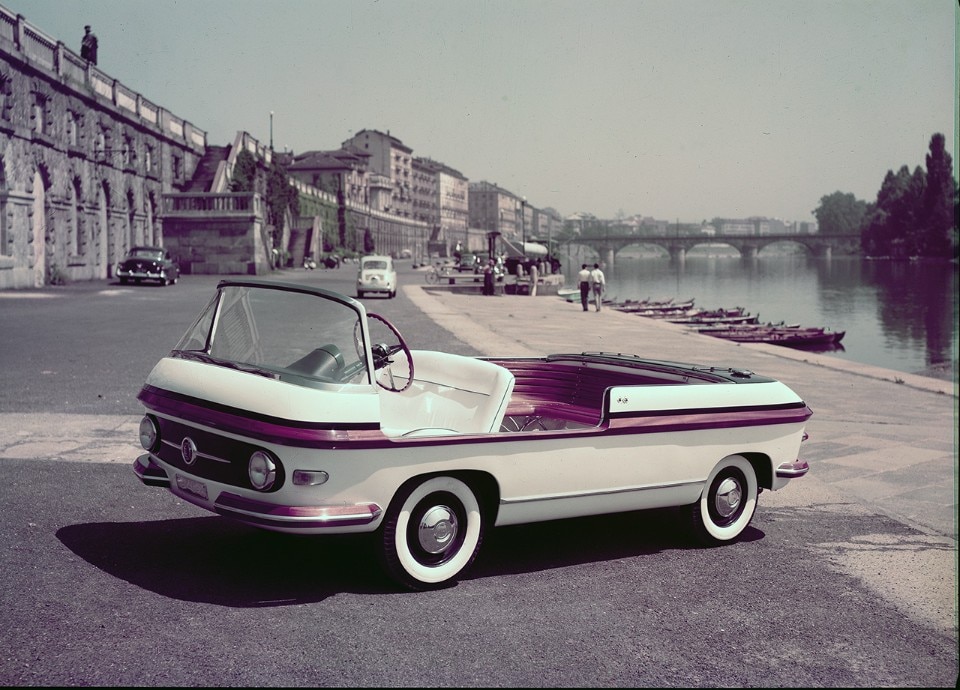
FIAT Eden Roc, 1956
This is the most famous of the several spiaggine specifically tailored on the needs and whims of Gianni Agnelli, a tireless client of one-off models, very coveted by car collectors today. Based on the much popular FIAT 600 Multipla, designed by Pininfarina, the Eden Roc is a road-going speedboat, openly inspired by Riva’s luxury models and also featuring teak details. Two units were produced, and the luckiest one spent never ending summers at Agnelli’s villa in Cap d’Antibes.
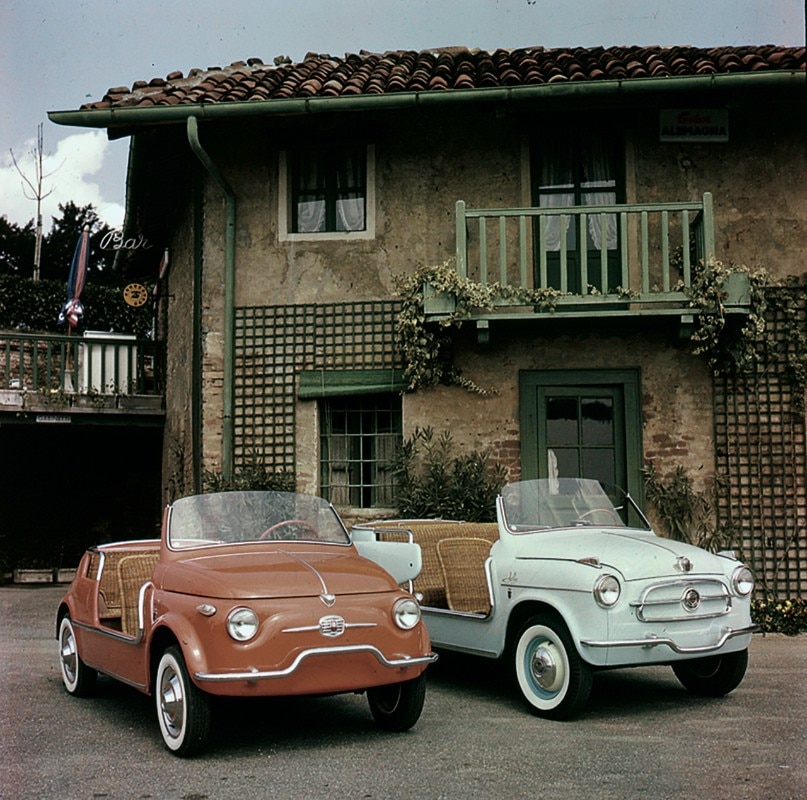
FIAT 500 Jolly Ghia, 1958
This version of the FIAT Nuova 500 was elaborated by coachbuilder Ghia right after Sergio Sartorelli took its lead. The customization includes the typical steps of the transformation of a regular car into a spiaggina: roof and doors are removed, and details are added to decorate the final result. Headlights are surrounded by thick chrome frames, and bumpers feature a specific design. Wickerwork seats and a sun blind, which is not an actual soft top, stress the Jolly Ghia’s seaside inclination.
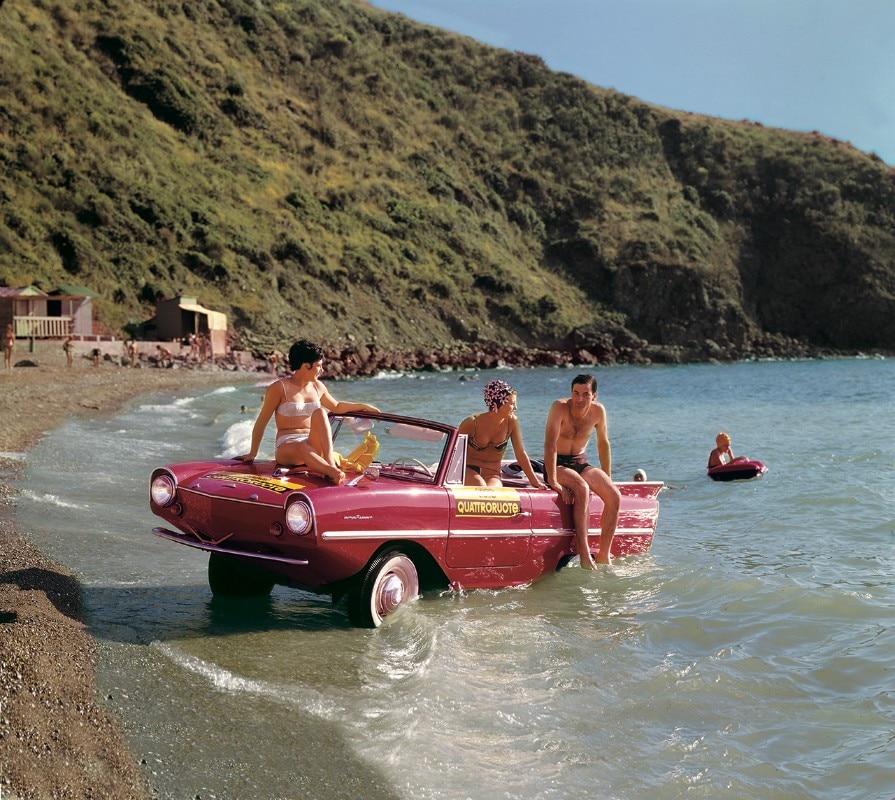
Amphicar, 1961
Almost 4,000 Amphicar were produced between 1960 and 1965, a remarkable figure for a truly atypical model. It was the invention of German engineer Hans Trippel, the very first designer to conceive a car which could both ride on dryland and navigate. While other spiaggine would stop on the shoreline, the Amphicar could sail in open waters: it did so, for instance, in August 1965, on the very summery cover of Quattroruote 166.
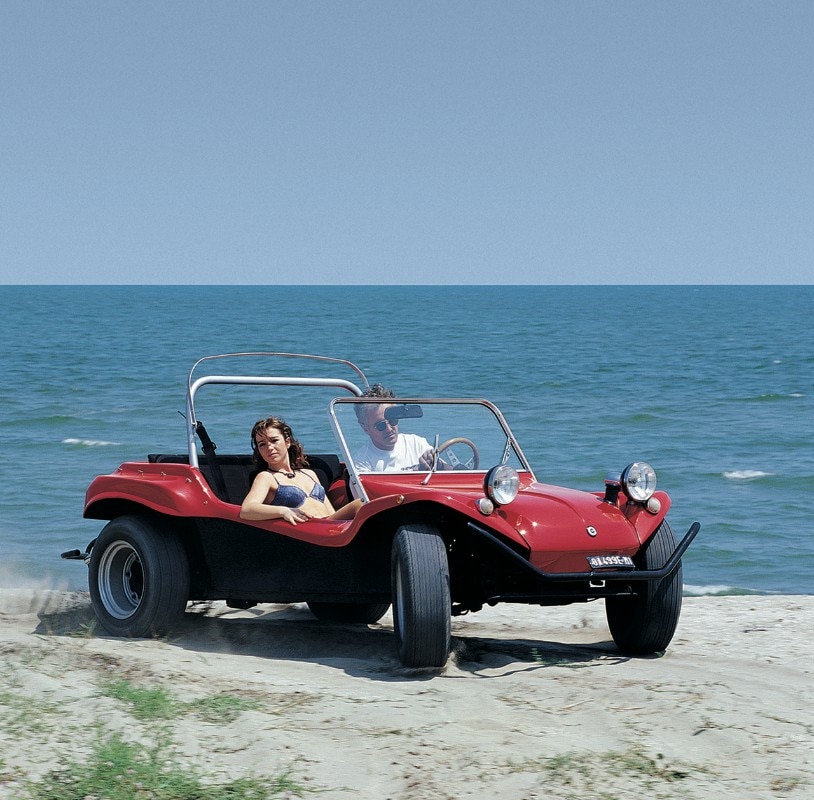
Volkswagen Beetle Dune Buggy, 1964
The Volkswagen Beetle served as the basis for the design of several beach versions, often stemming from a typically American do-it-yourself approach. The most famous of all the dune buggies is probably the one designed by Californian engineer Bruce Meyers, produced between 1964 and 1971 as Meyers Manx. The bodywork stripped to its bare minimum, made of light fiberglass, the unusually large wheels, the protruding headlights and the roll bars are the most distinctive features of a beloved icon of car life on the beach.
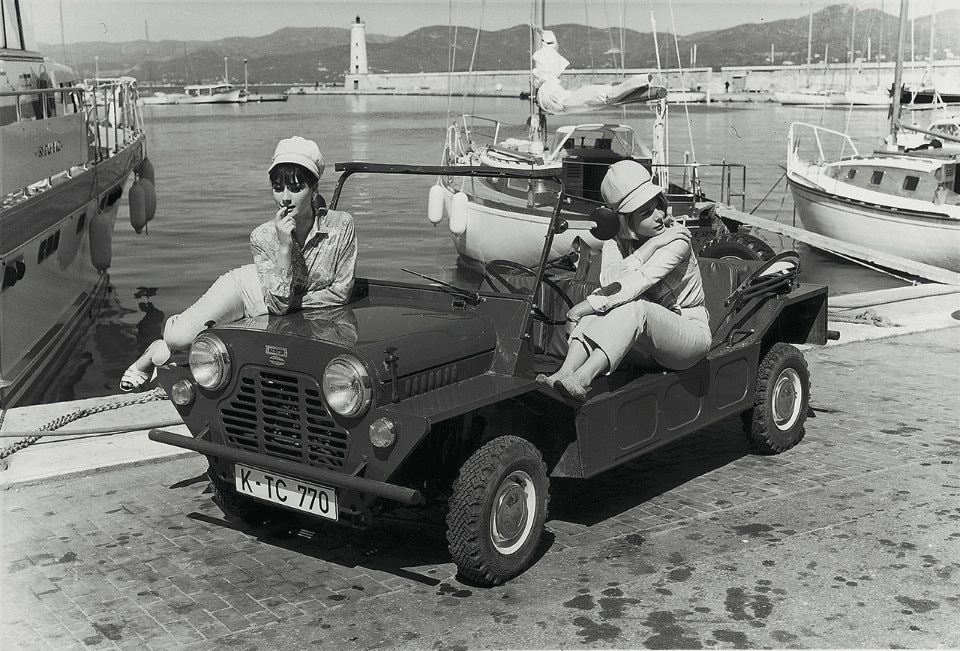
Mini Moke, 1964
The Mini Moke is the quintessential English spiaggina. While the Mini Beach Car from 1958 had remained an experiment built in few units, tens of thousands Moke were assembled between 1964 and 1993, initially by British Motor Company’s factories. The Moke shared the same chassis as the Mini, as well as the same designer, Sir Alec Issigonis. While it was initially conceived as a military vehicle, also suitable to be parachuted, it rapidly became a familiar presence in the most renowned seaside resorts and golf clubs.
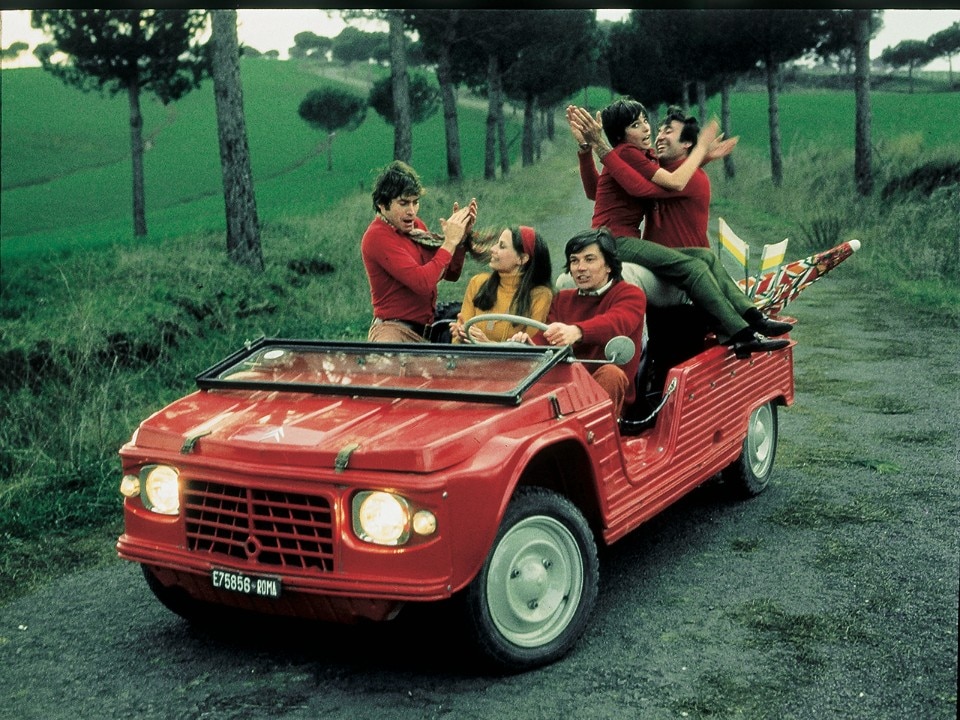
Citroën Méhari, 1968
Many consider that the Citroën Méhari is the spiaggina par excellence. Built on the chassis of the 2 CV/Dyane, the Méhari shows their same distinctive “swinging” pace, due to its fully independent suspensions. The ABS plastic bodywork is its main selling point. In fact, it is light but very solid thanks its panels’ grooving; besides, it is resistant to dust and batch-dyed, which makes it virtually impossible to scratch or scrape.
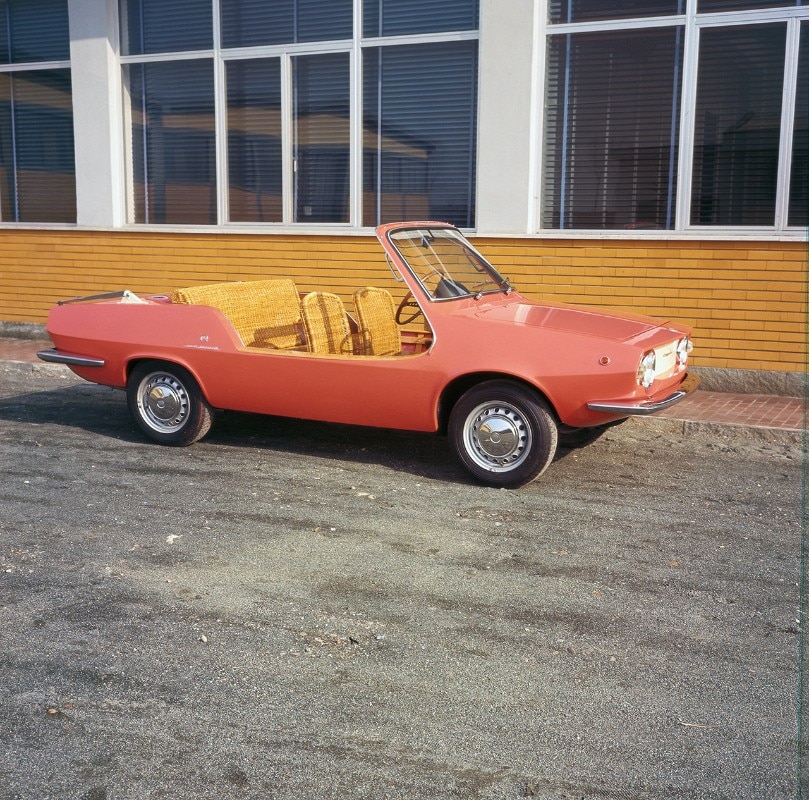
FIAT 850 Shellette Michelotti, 1969
Built on the chassis of the FIAT 850, the Shellette Michelotti continues the series of FIAT’s high-end spiaggine. Approximately 80 units were assembled, one of which belonged to Jacqueline Onassis. Giovanni Michelotti collaborates with Philip Schell, a yacht designer, to conceive a car with hints at the nautical world. Curiously enough, while it has no doors and no actual soft-top, the FIAT 850 Shellette Michelotti had a heating system, which is not to be taken for granted for a spiaggina.
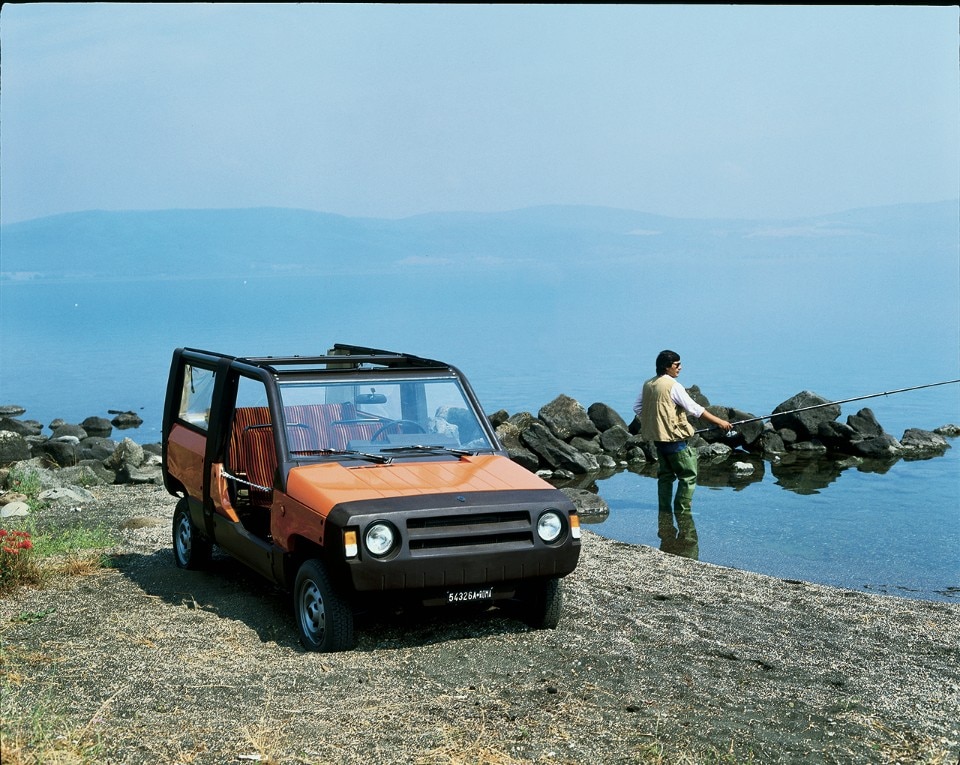
Renault Rodéo, 1970
When it launched its first spiaggina, the Rodéo, Renault had the clear goal to challenge the domination of the Citroën Méhari. Based on the Renault 4, the Rodéo shows a similar cabin layout, minimalist but roomy and flexible, and more importantly a comparable plastic bodywork. Its boxy shapes are aimed at containing production costs. The Rodéo is available at first in four different trims (Quatre-saisons, Coursière, Chantier e Evasion), featuring specific adaptation to its use as a spiaggina, an all-season car or a working vehicle.
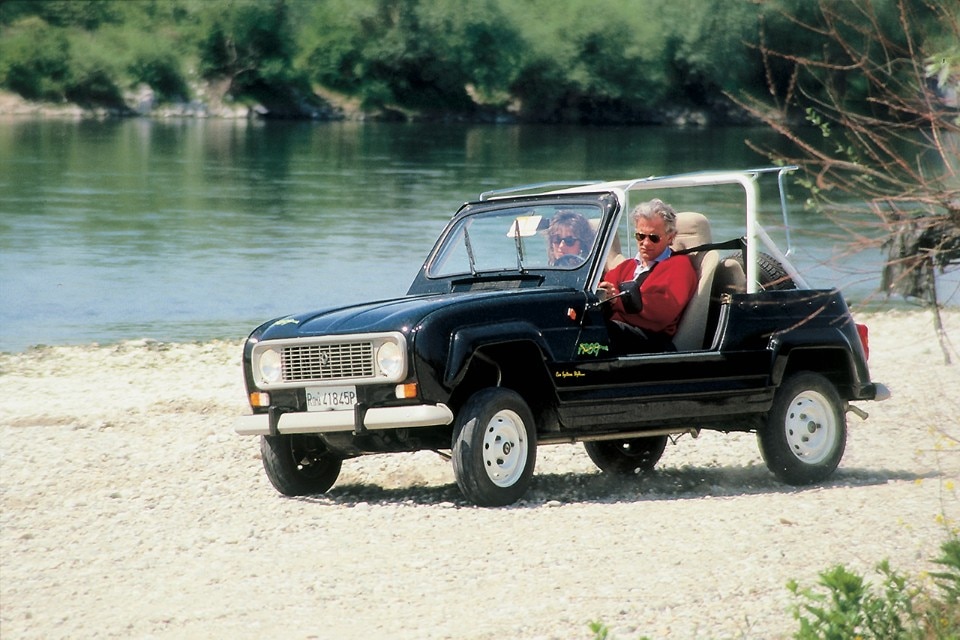
Renault 4 “Frog”, 1986
In July 1987 the Renault 4 “Frog” makes its way to the cover of Quattroruote, much like the Amphicar two decades earlier. Born as the replacement for the Rodéo, it represents in many regards a way too overdue attempt to revive the trend of the spiaggine, which was rapidly fading. As such, it had a very limited success on the market, despite featuring original solutions, such as its rear facing seats.
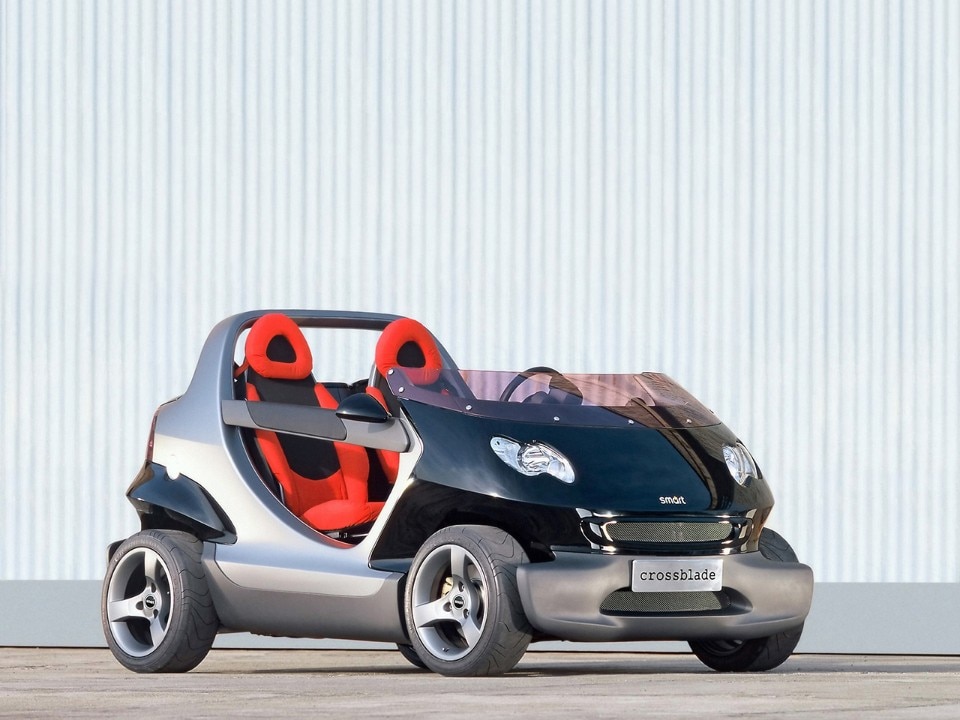
Smart Crossblade, 2002
In the early years 2000, the Smart Fortwo serves as the basis for what is probably the very first spiaggina of the new millennium. The Crossblade is conceived as a niche car, to be produced in 2,000 numbered units, and it provides a boldly sporty interpretation on the theme of beach cars. As per tradition, it has no roof and no doors, though safety side bars somehow function as such. The absence of an actual windshield is certainly of great visual impact.
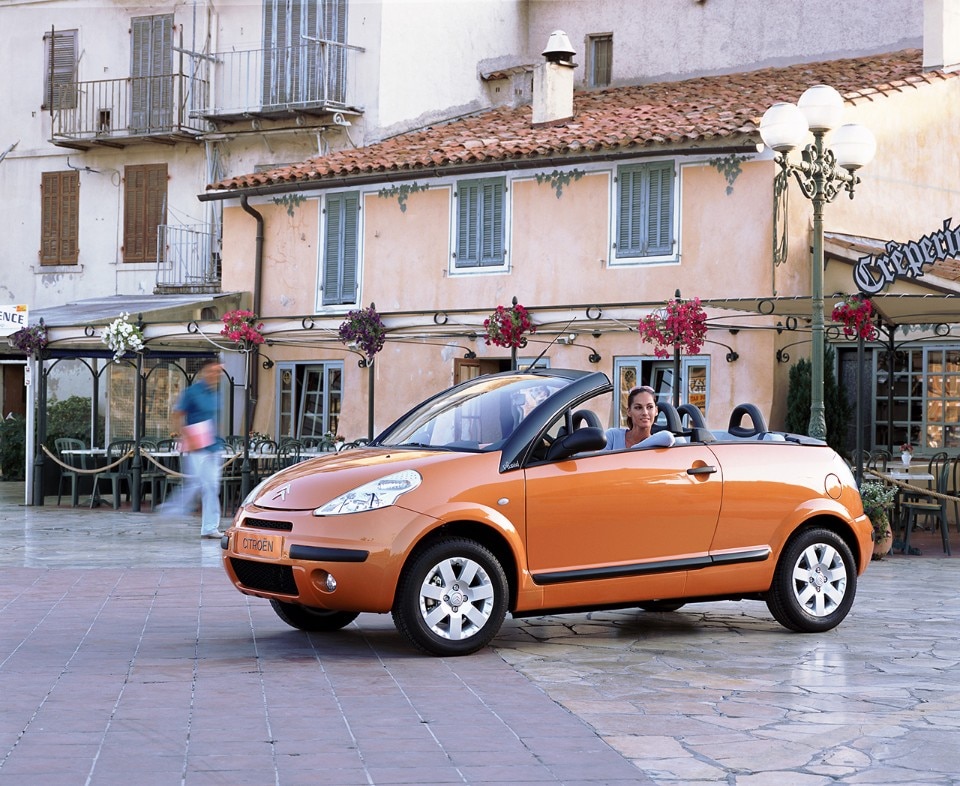
Citroën C3 Pluriel, 2003
The Citroën C3 Pluriel is a “chameleon-like” version of the C3’s first generation. The possibility to remove the soft-top, the rear seats and even the side pillars, alongside the fold-down trunk opening, allow to transform it from a hatchback into a 4-seater convertible, a 2-seater roadster and even a little pick-up. While it is a fully-fledged regular car, it derives from the tradition of spiaggine the same playful approach, conceiving the vehicle as a changing object, to be customized according to each owner’s will (at least in principle).
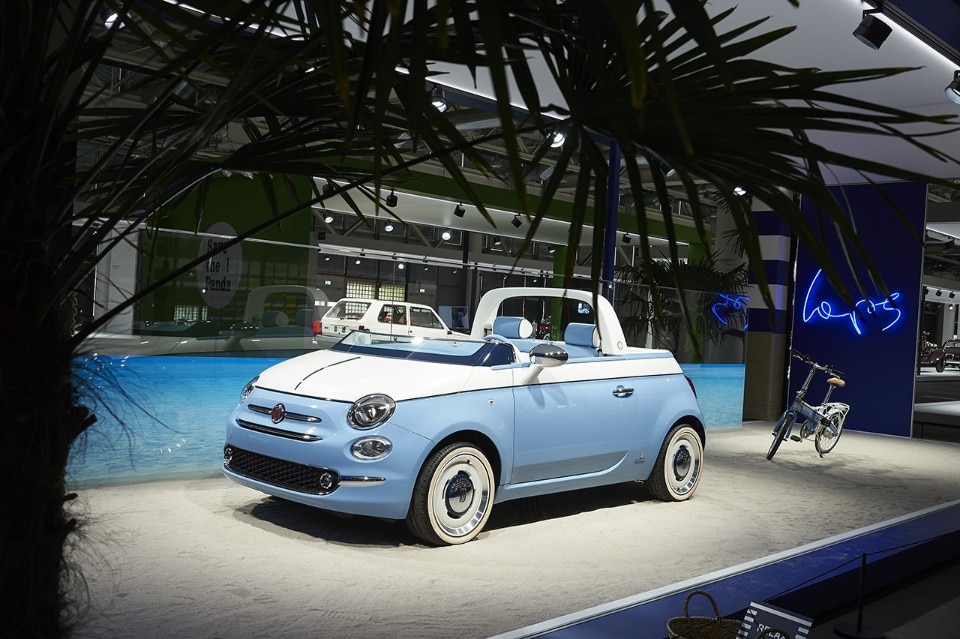
FIAT 500 "Spiaggina '58", 2018
Time has come also for the spiaggine to play the card of nostalgia. In 2018, FIAT celebrates the 60 years of the Nuova 500 and of its first special version, the Jolly Ghia Spiaggina, with a high-end trim, the “Spiaggina ‘58”. It is made available uniquely for the convertible version, and only in the specific “Azzurro Volare” bodywork color. Exactly 1,958 units of the FIAT 500 “Spiaggina ‘500” are manufactured.
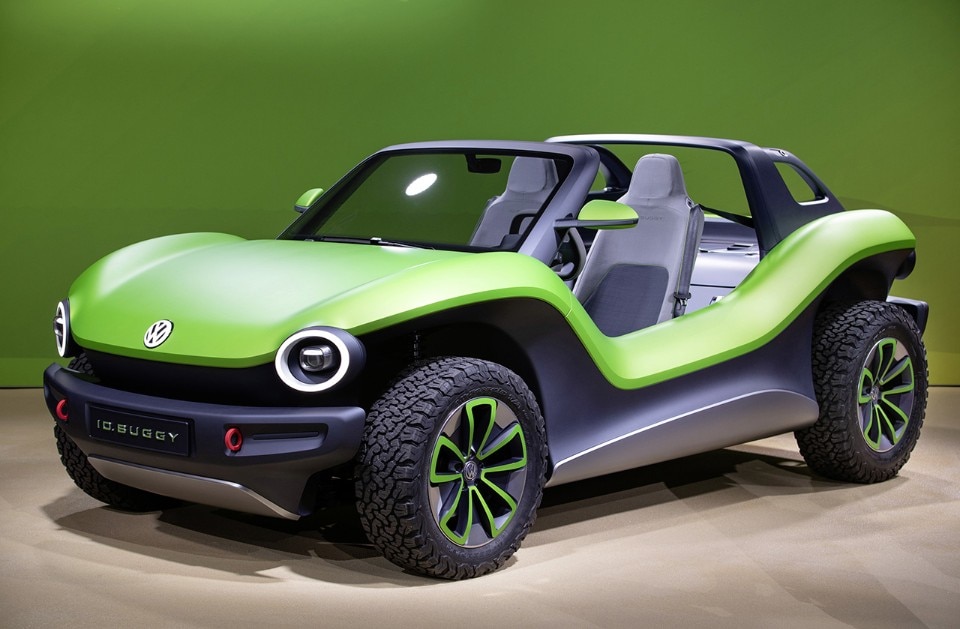
Volkswagen ID Buggy, 2019
Volkswagen openly associates the evergreen imagery of the spiaggina, made of open air freedom in direct contact with nature, to the sphere of technology and sustaibility of electric cars. The ID Buggy’s design recalls several features of its California ancestors from the 1960s, but it revisits them with a clear contemporary twist, rather than with a retro-oriented attitude. The bodywork is conceived in order to be easily removed from the chassis. This allows small manufacturers and start-up companies to develop a potentially unlimited range of versions.


